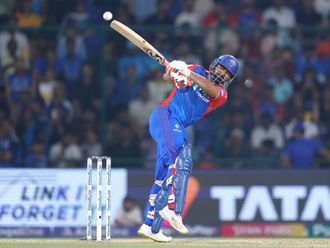
Kolkata: The pink ball Tests, which has seen 16 matches in all since Australia and New Zealand faced off in Adelaide in 2015, is still a work in progress. While the popular opinion is it’s the way forward to save Test cricket, albeit in a phased manner, but the behaviour of the balls used - from their exaggerated swing to their tendency to lose colour quickly and pose problems for the batsmen during the twilight period still raises questions.
It’s in this context that the Ahmedabad Test - which India won inside two days - will go down as a bad advertisement for Test cricket in general and pink ball Tests in particular. You cannot help but feel that it had been an anti-climax of the highest order - brought about by a sub-standard wicket as well as the skiddy quality of the pink ball which India’s left-arm spinner Axar Patel used the best.
A lot has been said during the build-up to this Test about the visiting England team’s whinging about the quality of the wicket in the second Test in Chennai - where India won handsomely to bounce back in the series. The hosts were, in good measure, justified as their batsmen scored two centuries there (Rohit Sharma and Ravi Ashwin) and built up potentially match-winning totals in both innings against which England failed to cross 200 on both occasions.
I am, not for once, advocating not taking any home advantage - but to also keep in mind the quality of cricket on offer. The common argument that one would hear is that Indians are not known to complain about the seaming or bouncy tracks of England, Australia or South Africa - but when a Virat Kohli or Cheteshwar Pujara holds out on a testing Headingley or Gabba - the sense of satisfaction derived from such efforts is immense.
A rank turner (which is essentially not produced by rocket science but by two things: shaving off the grass from the wicket and leaving the surface dry), on the other hand, is a ploy which can cut you both ways. Look at how the Indian batting line-up floundered to be all out for 145 on the second day of a Test match: making a part-timer like Joe Root look like a Jim Laker with a haul of five for eight.
One can argue about what’s an ideal Test wicket till the cows come home. The broad consensus is there should be something in it for both batsmen and bowlers for the first two days while the spinners come into play from the third day onwards - cashing in on the normal wear and tear. Sunil Gavaskar observed on TV on Thursday that while a batsman’s technique against pace and bounce demands courage, the turners offer the true test of skills for the batsmen in terms of footwork, positivity and decisiveness.
Point taken, but can a second day Test wicket afford to have the ball turning square, keeping low and each shot of the batsmen throwing up a red mist? It's a sublime art to survive there, as Gavaskar himself showed us during that memorable innings of 96 against Pakistan in erstwhile Bangalore - but isn't this what we call an under-prepared wicket?
Let the jury be out on this...








